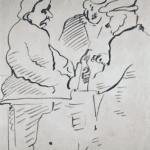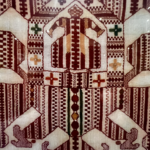Fine-grained and translucent ceramic wares are called porcelain. Sometimes referred to as china, porcelain was invented in China in distant antiquity. The Chinese made porcelain of kaolin (white clay) and petuntse, a stone composed of feldspar, mica, and quartz. Porcelain that closely follows the Chinese recipe is known as “true” or hard-paste porcelain. The two other kinds of porcelain are soft paste and bone china.
Hard-paste objects are fired at extremely high temperatures (2645° F) approaching the melting point of iron at 2797° F. To withstand extreme temperatures, porcelain kilns are lined with porous brick made of fired clay. European hard paste is usually composed of kaolin and feldspar, the most abundant mineral in the Earth’s continental crust. The creator of Russian porcelain Dmitry Vinogradov made porcelain out of white clay, flint, and alabaster.
Soft paste porcelain is not much softer than the hard paste variety, although it can be cut with a file. Sometimes called “artificial,” it was the earliest type of European porcelain. To imitate the translucent Chinese wares, early European ceramists added ground glass to clay and fired it at 2200° F. The world-renowned soft paste porcelain was produced at the Sevres Porcelain Manufactory, France.
Bone china is indeed made of cow bone. Bone ash can make up to 50% of the porcelain formula. Bone china was developed in England in the mid-eighteenth century. Well-known bone china marks are Royal Crown Derby, Royal Worcester, and Wedgwood.












You must be logged in to post a comment.